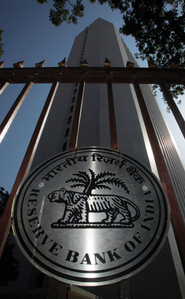
Uneven progress towards close-out netting in Asia – Isda comment
Critical risk management instrument still not available in certain jurisdictions, say Isda's Asia team

 Close-out netting refers to a process involving the termination of obligations under a contract with a defaulting party and the subsequent combining of positive and negative replacement values into a single net payable or receivable.
Close-out netting refers to a process involving the termination of obligations under a contract with a defaulting party and the subsequent combining of positive and negative replacement values into a single net payable or receivable.
The enforceability of close-out netting is an important building block of prudent derivatives risk management, and Basel II specifically recognises it as a risk-reduction tool. The recognition of exposure on a net basis through close-out netting results in a more efficient use of credit lines, facilitates the taking of collateral to offset exposures, lowers reserves required to satisfy regulatory capital requirements, and ultimately reduces systemic risks.
The benefits of close-out netting are also recognised in the context of cleared derivatives. The Principles for Financial Market Infrastructures, published by the Committee on Payment and Settlement Systems and International Organization of Securities Commissions (Iosco) in April 2012, include close-out netting enforceability (both for a central counterparty, or CCP, closing out against a defaulting clearing member and a clearing member closing out against a defaulting clearing house) as one of the criteria for achieving qualifying CCP status, which also translates into reduced risk capital charges.
Requirements for the margining of non-cleared derivatives, published by the Basel Committee on Banking Supervision and Iosco in September 2013, further highlight the importance of netting. Without legally enforceable netting arrangements (and the ability to perfect collateral), mandating the exchange of large amounts of initial and variation margin would only increase legal risk – with a deleveraging effect on economic activity – without fulfilling its purpose as a risk mitigant.
For all of these reasons, netting enforceability remains central to Isda's efforts in Asia-Pacific.
 Australia
Australia
In Australia, the Payment Systems and Netting Act 1998 overrode certain sections of the Banking Act 1959, thereby supporting the enforceability of close-out netting. However, the enactment of the Financial System Legislation Amendment (Financial Claims Scheme and Other Measures) Act 2008 (Commonwealth) (FCSM Act) created an inconsistency in legislation.
The FCSM Act enabled the appointment of a statutory manager by the Australian Prudential Regulation Authority and also amended sections of the Banking Act, which empowered the statutory manager to prevent the termination of transactions. The ability to terminate transactions is a fundamental step in the close-out process, as it allows a close-out value to be determined and settled in the event of a default. Despite this inconsistency, derivatives users in Australia continue to practice close-out netting.
The Australian government is continuing to work towards addressing the inconsistency between the amended sections of the Banking Act under the FCSM Act.
The Personal Property Securities Act 2009 (PPSA) became operational on January 30, 2012. Close-out netting provisions are excluded from the PPSA's operation by a safe harbour, which excludes rights and interests under close-out netting. The PPSA also states that the Netting Act prevails over the PPSA where there is any inconsistency.
 China
China
Close-out netting is not a recognised legal concept under Chinese law. The enforceability of the close-out netting provisions will therefore likely be considered in the context of insolvency set-off under article 40 of the Enterprise Bankruptcy Law.
 On September 5, 2012, the Supreme People's Court (pictured) issued some interpretations on the Bankruptcy Law (the SPC Interpretation II), which include several provisions on creditor set-off rights. The SPC Interpretation II clarifies that a set-off is effective upon receipt of the set-off notice from the creditor to the administrator, unless the court orders otherwise following a successful challenge by the administrator.
On September 5, 2012, the Supreme People's Court (pictured) issued some interpretations on the Bankruptcy Law (the SPC Interpretation II), which include several provisions on creditor set-off rights. The SPC Interpretation II clarifies that a set-off is effective upon receipt of the set-off notice from the creditor to the administrator, unless the court orders otherwise following a successful challenge by the administrator.
The SPC Interpretation II further provides that the administrator cannot claim that a creditor's set-off is invalid on the grounds that the debt owed by the debtor or creditor has not become due as of the time when the court accepted the bankruptcy proceeding, or the debts owed by the debtor and the creditor to each other are of different types and nature.
The SPC Interpretation II is considered to be an encouraging development toward close-out netting enforceability in China, but there are continued concerns about whether an exercise of the non-defaulting party's right of set-off pursuant to Article 40 of the Bankruptcy Law is capable of achieving the same economic effect as close-out netting under Section 6(e) of the Isda Master Agreement. The prevailing view is positive, although it has been pointed out that the process of asserting set-off rights and the administrator's right of challenge may cause delay and create uncertainty in completing the statutory set-off procedure in practice.
In order to achieve close-out netting, the non-defaulting party must have the right to terminate all transactions under the Master Agreement upon an event of default. In this respect, Article 18 of the Bankruptcy Law is problematic.
Under Article 18, the administrator has the power to determine whether to terminate or continue the performance of an executory contract upon the commencement of a bankruptcy proceeding. Absent express legislative support or judicial interpretation recognising the concept of a 'single agreement', the possibility of the administrator cherry-picking certain transactions, rather than looking at the net exposure, cannot be ruled out.
China is drafting its special bankruptcy rules for deposit-taking financial institutions, and is also considering the introduction of a resolution and recovery regime for systemically important financial institutions. The Financial Stability Board (FSB) has recommended that a resolution authority should have the power to temporarily stay creditor termination rights in order to facilitate an orderly resolution, so long as certain conditions are met – such as the stay is strictly limited in time and for a period not exceeding two business days. It remains to be seen whether any resolution and recovery regime proposed in China meets these conditions.
 India
India
India aims to achieve greater consistency in the application of netting directives with financial derivatives transactions. Legal experts in India generally agree that enforceability in insolvency is not an issue for entities incorporated under the Indian Companies Act, which includes private sector banks.
However, there is some doubt about enforceability in insolvency for nationalised banks and the State Bank of India and its subsidiaries. This arises because Indian banking legislation states that any provision relating to the winding up of companies doesn't apply to these banks, and they can only be liquidated by order of the Indian government.
 The Reserve Bank of India (RBI, pictured) also doesn't allow Indian-incorporated banks and Indian branches of foreign banks to net their exposures for regulatory capital purposes (as detailed in its Master Circulars on Prudential Guidelines on Capital Adequacy and Market Discipline – New Capital Adequacy Framework).
The Reserve Bank of India (RBI, pictured) also doesn't allow Indian-incorporated banks and Indian branches of foreign banks to net their exposures for regulatory capital purposes (as detailed in its Master Circulars on Prudential Guidelines on Capital Adequacy and Market Discipline – New Capital Adequacy Framework).
In its Circular on Prudential Norms for Off-Balance Sheet Exposures of Banks – Bilateral Netting of Counterparty Credit Exposures in 2010, the RBI also stated that "since the legal position regarding bilateral netting is not unambiguously clear, it has been decided that bilateral netting of mark-to-market values arising on account of such derivative contracts cannot be permitted". This was reiterated in an RBI circular issued in 2011.
This causes concerns because the Basel Committee requires a bank to satisfy its national supervisor that the legal basis for netting is clear in order to net exposures for regulatory capital. That includes obtaining "written and reasoned legal opinions" that confirm the enforceability of netting under the relevant agreement.
Achieving greater consistency on netting will have a positive effect on the future growth of the Indian rupee derivatives market by reducing costs for end-users, banks and other financial institutions.
 Japan
Japan
The enforceability of close-out netting in Japan was recognised as market practice with the publication of the Master Agreement (Interest Rate and Currency Exchange Agreement) in 1987. That was based on the set-off provision of the Civil Code or Article 61 of the former Bankruptcy Act.
In 1998, the Act on Collective Liquidation of Specified Financial Transactions Conducted by Financial Institutions, etc – known as the Netting Act – came into force. That was followed by the new Bankruptcy Act in 2005. The Netting Act and Article 58 of the new Bankruptcy Act provide a strong basis for the enforceability of termination and close-out netting provisions following the default of a counterparty.
An important recent legal development is the amendment of the Deposit Insurance Act (DIA) in 2014, which forms part of a new orderly resolution regime for financial institutions, including banks, securities companies, insurance companies and Japanese branches of foreign banks. This regime is based on the Key Attributes of Effective Resolution Regimes for Financial Institutions framework published by the FSB in 2011 and updated in 2014.
The DIA provides that the prime minister, based on the deliberation of the Financial System Management Committee, can determine the specific implementation of the resolution regime, and can suspend the termination provisions of certain financial agreements and close-out netting provisions for a certain period.
This designated period provides a temporary stay to enable the troubled financial institution to transfer its assets to an acquiring financial institution or a bridge financial institution. The length of the designated period will be determined on a case-by-case basis by the prime minister, but the prime minister does not have absolute discretion in the determination.
On March 6, 2014, the Financial Services Agency quoted Annex IV 2.1 (ii) of the FSB key attributes paper, which states "the stay is strictly limited in time (for example, for a period not exceeding two business days)" in its response to public comments on its proposed revisions. It is expected that the length will be determined in line with the FSB recommendations, and should not substantially exceed two business days. By this and other reasons, it is believed the revision to the DIA will not affect netting enforceability.
 Malaysia
Malaysia
Malaysia has continued with its efforts to transition to a netting-friendly regime with the passing of the Netting of Financial Agreements Act. Bank Negara Malaysia issued a consultation paper in September 2014, and published its response to feedback received on the consultation in January 2015. Following the implementation of the Netting Act on March 30, 2015, Isda expects a revised netting opinion to be positive, with publication of the opinion expected shortly. This development will generate considerable savings and efficiencies.
The Netting Act is intended to provide legal certainty for the enforcement of close-out netting arrangements under certain types of prescribed financial contracts, and addresses certain netting concerns that arose from legislation such as the Danaharta Act 1998, the Malaysia Deposit Insurance Corporation Act 2011, and the Capital Markets and Services Act 2007.
Most importantly, a maximum stay period of two business days is imposed on a non-defaulting party wishing to exercise contractual close-out rights, in line with the FSB's recommendations.
This is achieved through a ministerial order, which has the same legal effect as a regulation. A clean netting opinion will have a significant positive impact on efficiency, costs and risk management for both Malaysian and non-Malaysian derivatives market practitioners.
 South Korea
South Korea
South Korea has netting legislation in place and is considered a 'clean' netting jurisdiction. However, a number of uncertainties exist under Korean law, including netting against a foreign bank's branch in Korea.
Article 62(2) of the Banking Law of Korea (the 'preference provision') provides that, following the liquidation or bankruptcy of a foreign bank's Korean branch, the assets, reserves or capital of that branch should be allocated preferentially to first satisfy the claims of Korean citizens or foreigners resident in Korea against the branch, prior to the satisfaction of claims of non-resident foreigners.
The preference given to resident creditors under the preference provision means that claims in respect of transactions entered into by a Korean branch of a foreign bank that transacts on a multi-branch basis will be satisfied prior to claims in respect of transactions entered into by such bank's non-Korean branches and head office.
As a result, there is a risk that a Korean court might not enforce Isda Master Agreement netting provisions in order to augment the assets of a foreign bank's Korean branch to satisfy these preferential claims, if the close-out netting provisions impede the statutory preferential treatment accorded to Korean citizens or resident foreigners under the Banking Law.
Market participants have different views over whether the risk is material when transacting with a foreign bank's branch in Korea.
Erryan Abdul Samad is counsel, Asia; Jing Gu is assistant general counsel, Asia; Tomoko Morita is senior director and head of Tokyo office; and Keith Noyes is regional director, Asia-Pacific, at the International Swaps and Derivatives Association
Only users who have a paid subscription or are part of a corporate subscription are able to print or copy content.
To access these options, along with all other subscription benefits, please contact info@risk.net or view our subscription options here: http://subscriptions.risk.net/subscribe
You are currently unable to print this content. Please contact info@risk.net to find out more.
You are currently unable to copy this content. Please contact info@risk.net to find out more.
Copyright Infopro Digital Limited. All rights reserved.
As outlined in our terms and conditions, https://www.infopro-digital.com/terms-and-conditions/subscriptions/ (point 2.4), printing is limited to a single copy.
If you would like to purchase additional rights please email info@risk.net
Copyright Infopro Digital Limited. All rights reserved.
You may share this content using our article tools. As outlined in our terms and conditions, https://www.infopro-digital.com/terms-and-conditions/subscriptions/ (clause 2.4), an Authorised User may only make one copy of the materials for their own personal use. You must also comply with the restrictions in clause 2.5.
If you would like to purchase additional rights please email info@risk.net
More on Markets
FXGO volumes surge despite fee switch-on
Dealers split on whether levy is behind volume increases across SDPs
Banks hope new axe platform will cut bond trading costs
Dealer-backed TP Icap venture aims to disrupt dominant trio of Bloomberg, MarketAxess and Tradeweb
Kyriba sees uptake in AI-assisted FX hedging tools
Automated data collection and cleaning helps corporates create better hedges and has cut unexplained P&L moves by 87%, says vendor
Review of 2025: It’s the end of the world, and it feels fine
Markets proved resilient as Trump redefined US policies – but questions are piling up about 2026 and beyond
Does crypto really need T+0 for everything?
Instant settlement brings its own risks but doesn’t need to be the default, writes BridgePort’s Soriano
Asset managers prep autocall ETFs with assets tipped to hit $30bn
Actively managed strategies wait in the wings after systematic approach nets Calamos $500m
Citi launches core inflation QIS
Custom indexes eliminate energy and food prices to ease trading of stickier inflation trends
US insurers turn to short-dated FX forwards as notionals rise
Counterparty Radar: Trades under three months make up nearly 60% of total positions, up from just a third in 2022







